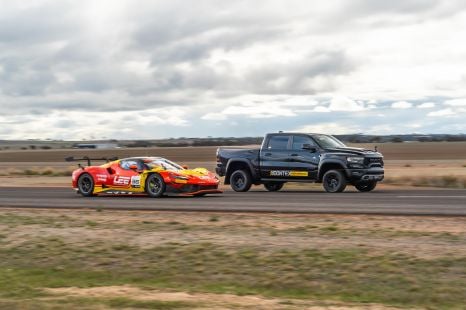

Max Davies
2026 Mazda CX-30 G20 Pure review
4 Days Ago

Contributor
It’s a BMW i3, but not as we know it…
Once applied to a forward-thinking electric city hatchback, the i3 badge has been brought back on an electric version of the 3 Series sedan for the Chinese market.
The i3 eDrive35L is likely to remain a China-only vehicle, given it’s based on that market’s long-wheelbase 3 Series instead of the regular-wheelbase model offered everywhere else in the world.

Under the skin is a 70kWh lithium-ion battery pack, mated with a single electric motor making 210kW of power and 400Nm of torque.
That’s down 10kWh on the lithium-ion battery in the electric iX3 SUV sold in Australia, although both cars share their power and torque outputs.
Claimed range is 526km measured against generous Chinese standards.

The nose has been given a makeover with headlights that tie in more neatly with the new-look X3 and X4 than the pre-update model.
The front bumper has a more angular look that once again mirrors that of the new X3, along with the 2 Series coupe, while down back there’s also a restyled rear bumper.
Inside, it features the same OS8.0 infotainment system that currently features in the iX SUV and i4 Gran Coupe. In those models, the cluster measures 12.3 inches and the touchscreen 14.9 inches.

Although the i3 likely won’t come to Australia, it points to what we can expect from the facelifted 2023 BMW 3 Series.
The current 3 Series only arrived in Australia in 2019, so we don’t expect this mid-cycle update to appear any earlier than 2022.
It’s likely we will see an electric 3 Series in Australia eventually. BMW is said to be developing another all-electric 3-Series-sized sedan on its Neue Klasse architecture that’s due by 2025.
Autocar reports the sedan, codenamed NK1, will be positioned as an electric alternative to the next-generation 3 Series much as Porsche will simultaneously offer its Macan and the new, unrelated Macan EV.

Unlike the i3 sedan, i4, and soon-to-be revealed i5 and i7, the NK1 will reportedly blaze its own path.
It’s set to receive an “electric-centric” design with unique proportions and fresh styling elements, plus the flat interior floor and longer wheelbase typical of dedicated EVs.
All new electric BMWs from 2025 onwards will use the Neue Klasse architecture, with the architecture eventually replacing today’s FAAR and CLAR architectures.
Where expert car reviews meet expert car buying – CarExpert gives you trusted advice, personalised service and real savings on your next new car.
Scott Collie is an automotive journalist based in Melbourne, Australia. Scott studied journalism at RMIT University and, after a lifelong obsession with everything automotive, started covering the car industry shortly afterwards. He has a passion for travel, and is an avid Melbourne Demons supporter.


Max Davies
4 Days Ago


James Wong
2 Days Ago


William Stopford
2 Days Ago


Josh Nevett
1 Day Ago


Paul Maric
19 Hours Ago


Ben Zachariah
7 Hours Ago